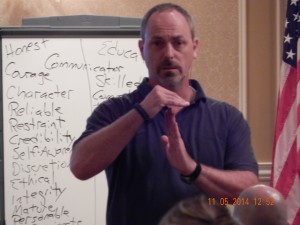Those of you who have attended Series 2 of the Police Dynamics training program may remember these definitions from the Dynamic of Jurisdictions:
-
Authority – the right to impose obligations on the time and resources of another
-
Jurisdiction – limitations on that authority
The Authority Maxim states that all human authority is delegated authority – it always flows from a higher source.
In the case of American government, the Constitution is a grant of authority from We, the People and it spells out certain limited authorities. Although the need for it was hotly debated by the Federalists and the Anti-federalists, our Founders understood the wisdom of placing further restrictions on the federal government by ratifying the Bill of Rights. The Bill of Rights further refines the jurisdiction of the federal government by limiting its power.
In these next three training videos from my presentation at Crossroad Church in Pensacola, I discuss the jurisdiction of the federal government. At the time, Crossroad was pastored by Chuck Baldwin, a great defender of constitutional government and the presidential candidate for the Constitution Party.
Starting with the First Amendment and moving through the Second, Third, and Fourth Amendments, we can get a feel for the intentions of the Founders as defined in the first four amendments to the Constitution.
The Second Amendment places limitations on the federal government in the arena of gun ownership. Many people don’t realize that the Second Amendment protects the right of the individual States to defend themselves from an intrusive federal force. The Second Amendment spells out the need for a State to maintain a well-regulated militia (one under the authority of the State and often called a State Defense Force today) by protecting the right of the people to keep and bear arms.
The Third and Fourth Amendments place restrictions on all three branches of the federal government: legislative, executive, and judicial.
Category: American Government, Dynamic of Jurisdictions

